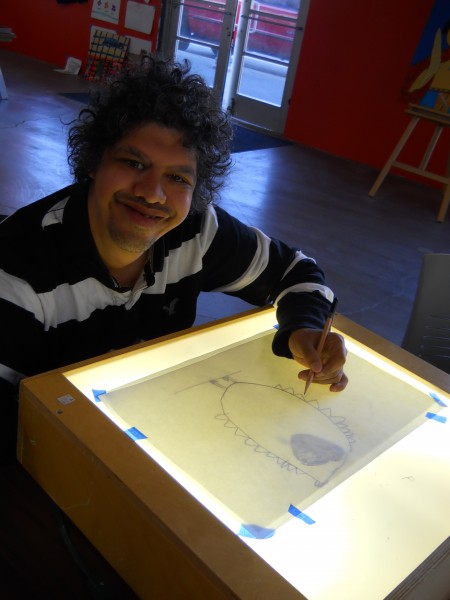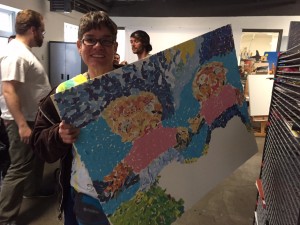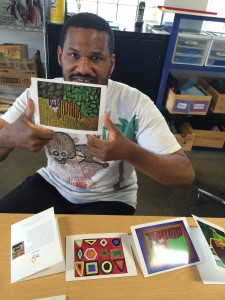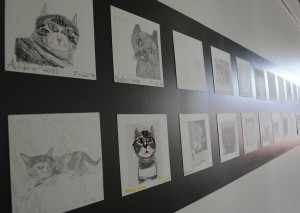
Strolling down D Street in downtown Anchorage, the Sparc! studio blends in with the line of shops and galleries. But behind the displays of vivid paintings and sculptures, artists are learning more than just creative expression.
Brandon Fernandez presses felting needles into his newest piece of art.
“This is the green, white, brown, red, and blue,” he says, pointing to the blocks of color on the fuzzy material. He picked them because he liked them.
Fernandez moved to Alaska 21 years ago, but Hawaii is still his home. His connection shines through the colors in his work, the bright blue skies and palm trees in his tile and glass mosaic, and the pictures of trees in his photography portfolio.

Nearby, Debra Burt, known as DBurt, shows off her newest work, a massive collage. She’s been working on the two-foot wide piece for about a month and a half, pasting together tiny bits of paper and images of faces cut from magazines to create two people standing together outside. She started taking art classes from The Arc when she was just a teenager. Twenty years later, she’s still painting.
Like most artists, her work is a way to communicate. Sparc! program director Lacie Stewing says for some of the artists at the studio, it’s one of the only ways. Sparc! is more than an art space; it’s a service for people who experience intellectual and developmental disabilities.
“Art helps them communicate,” she explains. “We work with people who are non-verbal. We work with people who can’t use all of their extremities. We work with people who maybe can’t connect on a level that I take for granted. And so art gives them a way to express what they’re feeling.”
Stewing says the classes range from painting and drawing to stained glass and printmaking. But they go beyond just art. The lessons also focus on helping the students learn how to interact in safe and healthy ways. Each person has different goals for development. Stewing says that requires special training for her teachers.

“You have to be a little more patient and non-verbally see what’s going on with the class. And if someone is getting kind of worked up, there can be an array of things happening. Maybe the music is too loud or the person next to them, they don’t like, or something. And those things manifest themselves different ways besides just ‘hey, can you turn the music down?’ because maybe you can’t speak.”
But mostly, her teachers are professional artists who are guiding other professional artists. For Stewing, it’s important that teachers understand the process and struggles of creating high quality art so they can pass that on to the students who have the same goals. Students like Andre Hogg.

Hogg doesn’t talk much, but he draws and paints prolifically. He opens a drawer and invites me to look inside. It’s filled with stacks and stacks of brightly colored paintings and drawings of cats with a few dogs and dinosaurs thrown in. Like the teachers around him, he’s had solo exhibits and sold his work around the community. He’s just another artist in another gallery in downtown Anchorage.
Anne Hillman is the healthy communities editor at Alaska Public Media and a host of Hometown, Alaska. Reach her atahillman@alaskapublic.org. Read more about Annehere.





